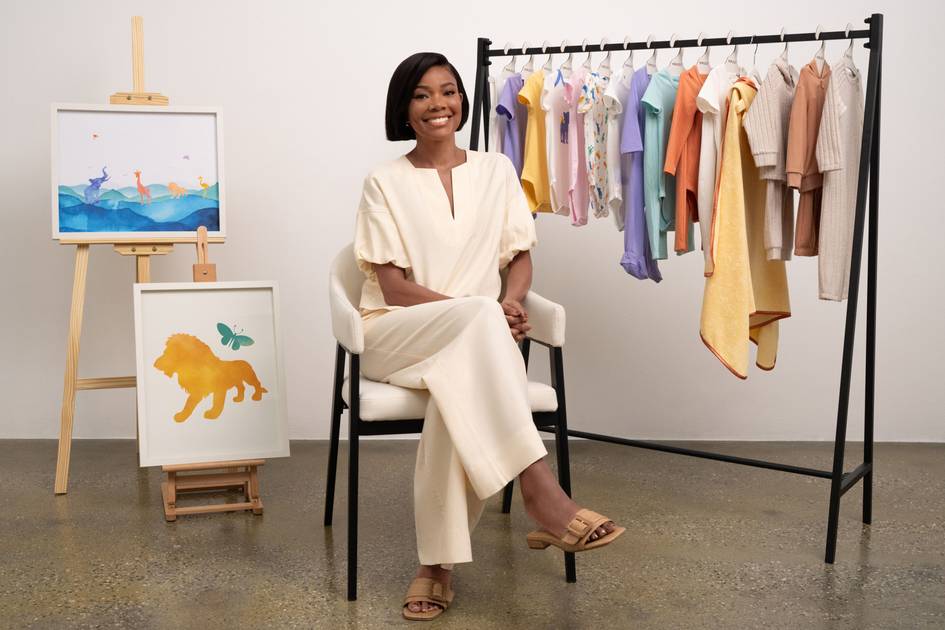The future of fashion according to tomorrow’s designers
Sketches for a homemade clothing kit. Credits: Tijn Roozen What lies ahead in fashion? Will we always pay attention to our clothing, or will a tracksuit behind a laptop suffice as our virtual alter-egos dress up in glittering gowns and tailored suits? Given mountains of clothing waste and dwindling resources, it’s logical for fashion students to explore alternatives for the future of fashion. We asked three graduates from the Amsterdam Fashion Institute (AMFI) how they envision this future, uncovering three key trends: making clothing yourself, upcycling garments, and digital fashion. No Rest A mood board featuring pink cherries, little ponies, and plastic dolls, mannequins with asymmetrical collars, zippers in unexpected places, and a jacket made of transparent plastic embroidered with clouds. On another mannequin, a jacket with a black transparent tube at the front—or is that the side? Entering the AMFI graduates’ studio, your eyes barely get a moment to rest. Nor do the graduates themselves, as they prepare for their final presentations during the "Future Ten Days" event, where they’ll showcase six creations each. Among them is Tijn Roozen, whose mood board is sparse, though his mind is teeming with ideas. While clothing is a daily necessity, the resources needed for fashion are rapidly depleting, urging a shift toward sustainability. "People around me recognize that fashion needs to be more sustainable, but they don’t quite know how," Tijn observes. "It really has to come from the industry." So, what’s Tijn’s solution? "I design DIY clothing kits containing pre-cut fabric, a zipper, and buttons tailored to size. All that’s needed is assembly, and you have a fantastic garment. It’s fun to make, far more sustainable than fast fashion, and if you make it yourself, you’ll cherish it much more." This makes fashion accessible for DIY enthusiasts while remaining modern and stylish, Tijn believes. He envisions future fashion as more of a luxury product, moving away from the constant demand for new wardrobes each season. DIY fashion, he suggests, is a sustainable way forward. And for those who aren’t skilled at sewing? "I see more sewing cafés popping up where people can sew together with guidance," Tijn adds. A Bomber Jacket Made from Wedding Suits Resource conservation is a central theme for these fashion students. According to Yasmien Knubben, Amsterdam is the perfect place for this movement. "There are many vintage shops, pop-up stores recycling clothing, and Amsterdam locals who turn second-hand garments into trendy fashion," Yasmien notes. "I hope the future focuses more on this instead of constant buying," she says. "Clothing gains so much more value when you see where it comes from and it’s not just something new." Yasmien once crafted an entire collection from old men’s suits. "I work in a bridal store where there were lots of surplus suits. I found it a shame to discard them, so I created a beautiful skirt from shirts, a blazer from trousers, and a bomber jacket from two pairs of trousers." Currently, Yasmien is upcycling vintage carnival items. Coming from a carnival family, she grew up surrounded by carousels and bumper cars. "I went back to my roots and explored the old materials," she says. Examples include 100-year-old ‘rabats’—decorative velvet curtains with hand-embroidered glass beads from carousels—which she transformed into a suit. Even the ducks from carnival shooting galleries found a new purpose as part of a duck-print fabric, while the lampshades from stalls became buttons for garments. "With a bit of imagination, you can repurpose anything," she enthuses. Yasmien sees the future in upcycling: revamping clothing by altering or combining items into new garments. She understands the desire to wear something new and special as a form of self-expression. By adding to or modifying existing pieces, people can refresh their wardrobe without burdening the planet with more new items. Trousers made from hundred-year-old rabats, cloths from the carnival. Credits: Yasmien Knubben Objectification Through Dolls For those who want to avoid physical materials altogether, digital fashion is the next frontier. Julia de Beer is graduating as a digital designer with an entirely online collection. For Julia, fashion has always been more than just fabric to cover the body—it’s a clear way to express oneself. "During my teenage years, like many, I rebelled by wearing black clothes and tearing holes in my tights. It was my way of rebelling," she recalls. Julia uses her designs to address societal issues. Inspired by her experiences of objectification, she delved into the world of doll clothing. "I’ve often felt like a toy for men, something to play with and project their fantasies onto. I felt unseen as a person, more like a doll." This societal trend extends globally, with increasing restrictions on women’s rights. Julia’s work explores the concept of women as literal toys, creating digital clothi
What lies ahead in fashion?
Will we always pay attention to our clothing, or will a tracksuit behind a laptop suffice as our virtual alter-egos dress up in glittering gowns and tailored suits?
Given mountains of clothing waste and dwindling resources, it’s logical for fashion students to explore alternatives for the future of fashion. We asked three graduates from the Amsterdam Fashion Institute (AMFI) how they envision this future, uncovering three key trends: making clothing yourself, upcycling garments, and digital fashion.
No Rest
A mood board featuring pink cherries, little ponies, and plastic dolls, mannequins with asymmetrical collars, zippers in unexpected places, and a jacket made of transparent plastic embroidered with clouds. On another mannequin, a jacket with a black transparent tube at the front—or is that the side?
Entering the AMFI graduates’ studio, your eyes barely get a moment to rest. Nor do the graduates themselves, as they prepare for their final presentations during the "Future Ten Days" event, where they’ll showcase six creations each. Among them is Tijn Roozen, whose mood board is sparse, though his mind is teeming with ideas. While clothing is a daily necessity, the resources needed for fashion are rapidly depleting, urging a shift toward sustainability. "People around me recognize that fashion needs to be more sustainable, but they don’t quite know how," Tijn observes. "It really has to come from the industry."
So, what’s Tijn’s solution? "I design DIY clothing kits containing pre-cut fabric, a zipper, and buttons tailored to size. All that’s needed is assembly, and you have a fantastic garment. It’s fun to make, far more sustainable than fast fashion, and if you make it yourself, you’ll cherish it much more."
This makes fashion accessible for DIY enthusiasts while remaining modern and stylish, Tijn believes. He envisions future fashion as more of a luxury product, moving away from the constant demand for new wardrobes each season. DIY fashion, he suggests, is a sustainable way forward.
And for those who aren’t skilled at sewing? "I see more sewing cafés popping up where people can sew together with guidance," Tijn adds.
A Bomber Jacket Made from Wedding Suits
Resource conservation is a central theme for these fashion students. According to Yasmien Knubben, Amsterdam is the perfect place for this movement. "There are many vintage shops, pop-up stores recycling clothing, and Amsterdam locals who turn second-hand garments into trendy fashion," Yasmien notes.
"I hope the future focuses more on this instead of constant buying," she says. "Clothing gains so much more value when you see where it comes from and it’s not just something new." Yasmien once crafted an entire collection from old men’s suits. "I work in a bridal store where there were lots of surplus suits. I found it a shame to discard them, so I created a beautiful skirt from shirts, a blazer from trousers, and a bomber jacket from two pairs of trousers."
Currently, Yasmien is upcycling vintage carnival items. Coming from a carnival family, she grew up surrounded by carousels and bumper cars. "I went back to my roots and explored the old materials," she says. Examples include 100-year-old ‘rabats’—decorative velvet curtains with hand-embroidered glass beads from carousels—which she transformed into a suit.
Even the ducks from carnival shooting galleries found a new purpose as part of a duck-print fabric, while the lampshades from stalls became buttons for garments. "With a bit of imagination, you can repurpose anything," she enthuses.
Yasmien sees the future in upcycling: revamping clothing by altering or combining items into new garments. She understands the desire to wear something new and special as a form of self-expression. By adding to or modifying existing pieces, people can refresh their wardrobe without burdening the planet with more new items.
Objectification Through Dolls
For those who want to avoid physical materials altogether, digital fashion is the next frontier. Julia de Beer is graduating as a digital designer with an entirely online collection.
For Julia, fashion has always been more than just fabric to cover the body—it’s a clear way to express oneself. "During my teenage years, like many, I rebelled by wearing black clothes and tearing holes in my tights. It was my way of rebelling," she recalls.
Julia uses her designs to address societal issues. Inspired by her experiences of objectification, she delved into the world of doll clothing. "I’ve often felt like a toy for men, something to play with and project their fantasies onto. I felt unseen as a person, more like a doll."
This societal trend extends globally, with increasing restrictions on women’s rights. Julia’s work explores the concept of women as literal toys, creating digital clothing inspired by doll garments. "I try to visualise my anger by using playful and cheerful patterns."
Fashion’s Future
"By creating my own clothing, I feel I’m regaining control, which gives me a sense of justice. I hope my work inspires other women to speak up and tell their stories."
Julia envisions fashion’s future as a means of self-expression, less tied to physical materials. She believes technology, like augmented reality, will play a larger role in the industry. This approach not only allows for creativity but also eliminates physical waste.
Future Fest (Toekomsttiendaagse)
On 19 June, the AMFI graduation show will be part of Future Fest.Additionally, Amsterdam Fashion Week celebrates Amsterdam’s anniversary with a catwalk on the Ring on 21 June.
These three students are part of the Fashion & Design graduates who will show their collections on 19 June during the AMFI Graduation Show. Find out more about the show here.






















































































































































